Evolutionary Ecology
The department of Evolutionary Ecology gathers complementary skills in behavioural ecology, population dynamics, population biology, community ecology, and methodology (statistics and modelling). The research done in the department aims at studying how animal species evolve in a changing world by understanding the causes of the evolution of traits, adaptations and interactions. For that, we consider different levels of organization from individuals to populations and communities. Because organisms cannot be considered isolated from other biotic factors, we consider pathogens but also competing species within communities.
We study how individuals adapt to their environments that are largely impacted by anthropic pressures, and how life history traits and behaviour evolve in response to these pressures. Although we mainly focus on phenotype, we more and more consider the mechanistic link between the genotype and the phenotype. We develop the theoretical framework of our discipline through a conceptual and modeling approach. In parallel, we test hypotheses that arise from theoretical predictions through experimental, comparative and observational approaches on different biological models (insects, birds, mammals). Experimental approaches are developed in the laboratory (insect model) and in natura (bird, insect and mammal models). Observational and comparative research is mainly concerned with vertebrates. Our approaches are also, and increasingly, interested in the mechanisms of adaptive responses. In addition to the classical approaches of demographic analysis and trait change, methods of ecophysiology, chemical ecology and molecular biology are used.
Our department hosts several long-term studies of wild populations of different species. These long-term studies offer a valuable way to understand how biotic and abiotic factors affect individuals’ life history traits, and the functioning of populations in natura. Five populations of mammalian species are thus monitored for several years (more than 40 years on roe deer, 30 on Alpine marmots, 25 years on cats, 16 years on zebras, and 20 years on impala). Two of our study sites (La Sassière in Vanoise National Park (Alpine marmots) and Hwange National Park) have been certified as “Site d’Etude en Ecologie Globale” (SEEG), and two (ZA “Hwange” and ZA “Antarctic and sub-Antarctic”) were certified as “Zone Atelier” by the CNRS.
The department of Evolutionary ecology is also largely involved in training activities. Lastly, we also have strong socio-economic relationships. Indeed, because we address questions of major societal interest (global warming, public health) we tightly collaborate with socio-economic partners (Office Français de la Biodiversité, Vanoise National Park, Hwange National Park in Zimbabwe, Office National des Forêts, etc.) and participate to general public and media events.
Publications
Display of 2131 to 2160 publications on 2458 in total
Size distribution of Holocene planktic foraminifer assemblages: biogeography ecology and adaptation
Marine Micropaleontology . 50 : 319-338
Journal article
see the publicationAvailability and use of public information and conspecific density for settlement decisions in the collared flycatcher
Journal of Animal Ecology . 73 : 75-87
Journal article
see the publicationMultiple causes of sexual segregation in European red deer : enlightenments from varying breeding phenology at high and low latitude.
Proceedings of the Royal Society B: Biological Sciences . 271 : 883-892
Journal article
see the publicationRôle des contraintes évolutives dépendantes du sexe en biologie des populations
incollection . -- : 1369-1379
Journal article
see the publicationVariation in harem size of red deer (Cervus elaphus) : the effects of adult sex ratio and age structure.
Journal of Zoology . 264 : 1-9
Journal article
see the publicationCoexistence de la reproduction sexuée et asexuée chez l'hyménoptère parasitoïde Venturia canescens : Aspects comportementaux et écologiques
incollection . -- : 409-418
Journal article
see the publicationComparative analysis of morphological traits among Drosophila melanogaster and D. simulans: genetic variability clines and phenotypic plasticity
Genetica . 120 : 165-179
Journal article
see the publicationSpecific effects-of cycling stressful temperatures upon phenotypic and genetic variability of size traits in Drosophila melanogaster
Evolutionary Ecology Research . 6 : 873-890
Journal article
see the publicationHow does susceptibility prevalence impact on the performance of disk diffusion susceptibility testing?
Diagnostic Microbiology and Infectious Disease . 49 : 131-139
Journal article
see the publicationEstimating the bacterial lag time: which model which precision ?
International Journal of Food Microbiology . 91 : 261-277
Journal article
see the publicationForcing reversibility in the no strand-bias substitution model allows for the theoretical and practical identifiability of its 5 parameters from pairwise DNA sequence comparisons
Preprint
see the publicationWhat limits the Serengeti zebra population?
Oecologia . 140 : 523-532
Journal article
see the publicationPredation risk and longevity influence variation in fitness of female roe deer (Capreolus capreolus L.)
Proceedings of the Royal Society B: Biological Sciences . 271 : 338-340
Journal article
see the publicationDynamics of Production of Sexual Forms in Aphids: Theoretical and Experimental Evidence for Adaptive “Coin‐Flipping” Plasticity
The American Naturalist . 163 ( 6 ) : E112-E125
DOI: 10.1086/383618
Journal article
see the publicationSpacing pattern in a social group of stray cats: effects on male reproductive success
Animal Behaviour . 68 : 175-180
Journal article
see the publicationDoes social complexity lead to sex-biased dispersal in polygynous mammals ? A test on ground-dwelling sciurids.
Behavioral Ecology . 15 : 83-87
Journal article
see the publicationStep-wise morphological trends in fluctuating environments: Evidence in the Late Devonian conodont genus Palmatolepis
Geobios . 37 : 404-415
Journal article
see the publicationParallel evolution in molar outline of murine rodents: the case of the extinct Malpaisomys insularis (Eastern Canary Islands)
Zoological Journal of the Linnean Society . 142 : 555-572
Journal article
see the publicationProspecting in the collared flycatcher: gathering public information for breeding habitat selection?
Animal Behaviour . 297 : 457-466
Journal article
see the publicationUsing large-scale data analysis to assess life history and behavioural traitrs: the case of the reintroduced White stork population in the Netherlands
Animal Biodiversity and Conservation . 27 : 387-402
Journal article
see the publicationComparative life histories and ecophysiology of Drosophila melanogaster and D. simulans
Genetica . 120 : 151-163
Journal article
see the publicationDrosophila melanogaster Drosophila simulans: so similar yet so different
Genetica . 120 : 5-16
Journal article
see the publicationPhenotypic plasticity of body pigmentation in Drosophila melanogaster: genetic repeatability of quantitative parameters in two successive generations
Heredity . 92 : 499-507
Journal article
see the publicationREML estimates of genetic parameters of sexual dimorphism for wing and thorax length in Drosophila melanogaster
Journal of Genetics . 83 : 163-170
Journal article
see the publicationCold adaptation in geographical populations of Drosophila melanogaster phenotypic plasticity is more important than genetic variability
Functional Ecology . 18 : 700-706
Journal article
see the publicationREML estimates of genetic parameters of sexual size dimorphism for wing and thorax length in Drosophila melanogaster
Journal of Genetics . 83 ( 2 ) : 163-170
DOI: 10.1007/BF02729893
Journal article
see the publicationUne nouvelle analyse multi-temporelle d`images satellitales les residus de l`Analyse en Composantes Principales. Un cas d`etude: une serie d`images Landsat Thematic Mapper de la Camargue France.
International Journal of Remote Sensing . 25 : 1925-1938
Journal article
see the publicationParallel evolution in molar outline of murine rodents: the case of the extinct Malpaisomys insularis (Eastern Canary Islands)
Zoological Journal of the Linnean Society . 142 ( 4 ) : 555-572
Journal article
see the publication
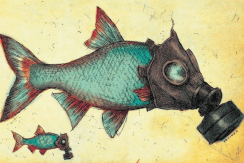
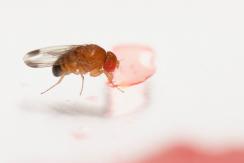
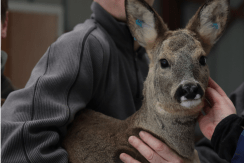
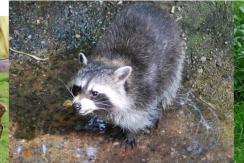
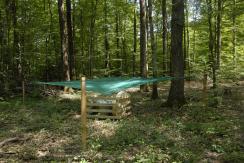
You also, comment on this article